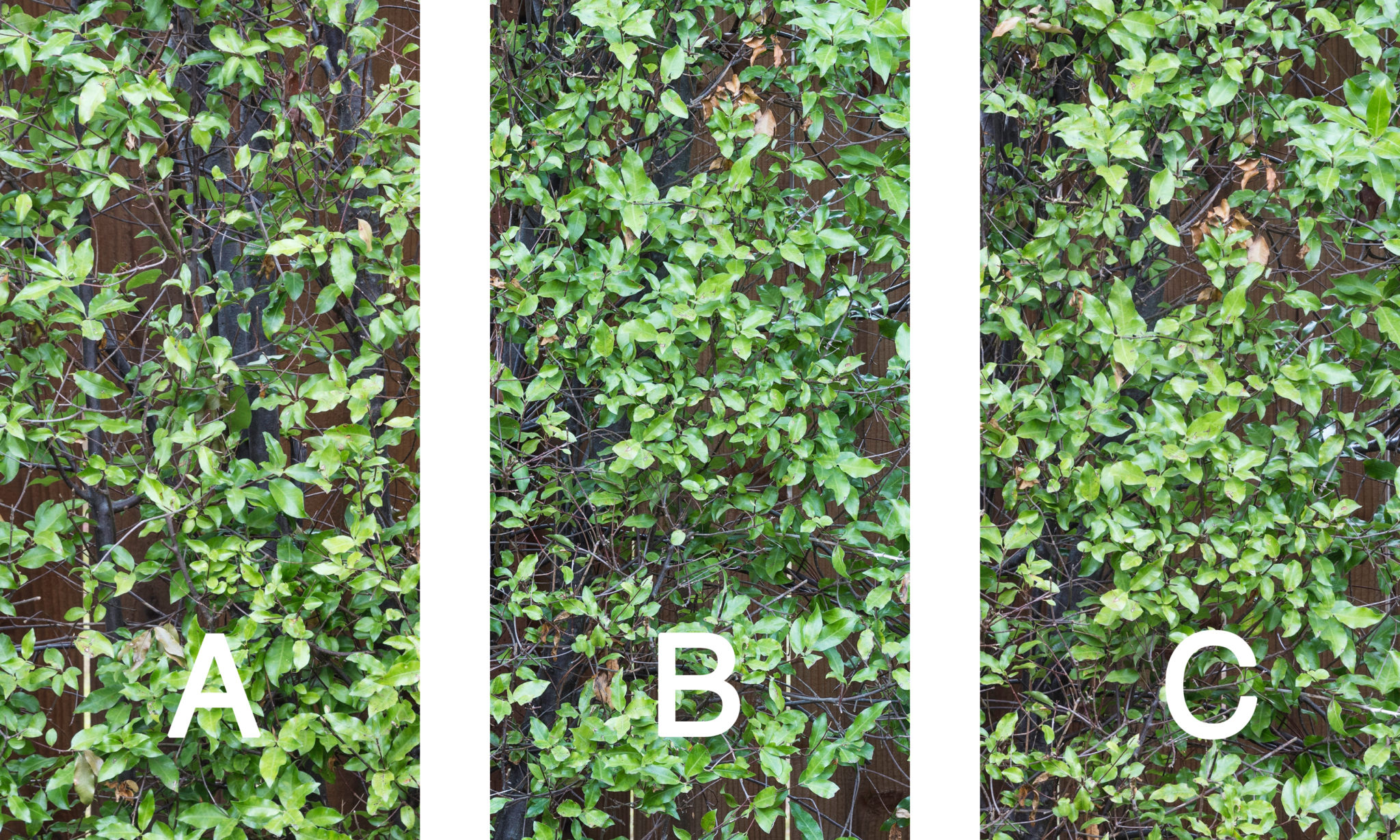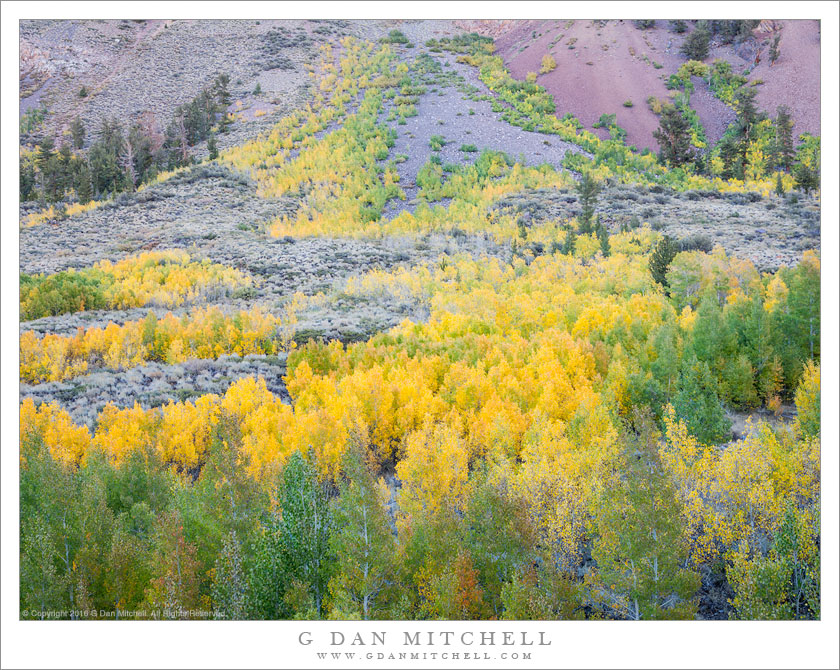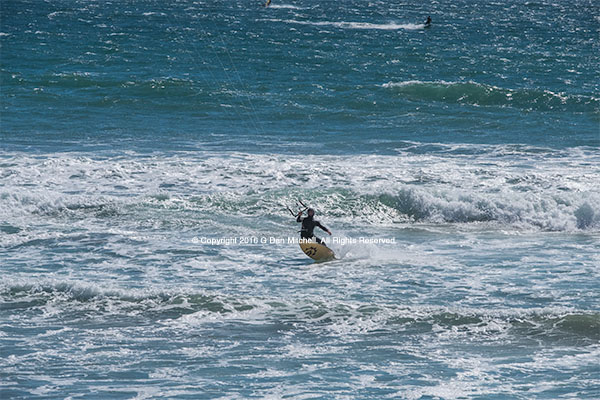Earlier I shared the beginning of an article that compares the Fujifilm GFX 50S and the Canon 5DsR, two cameras with different formats but approximately the same sensor resolution. That article (“Fujifilm GFX and Canon 5DsR” wasn’t complete … and now I’m back with one more point of reference.
When it comes to resolution, making judgments based on screen images has its limits. For example, 100% magnification crops “show” you things that won’t be visible even in a very large print, and in many cases you must interpret what you see in the screen image in order to speculate about what the print will look like. As we say, “The proof is in the print.”
With that in mind, I have prepared some files that may be useful for comparing print resolution from Fujifilm GFX 50S and the Canon 5DsR. These files each hold three “test strips” labeled A, B, and C. The files have been formatted for producing prints with a print area of 10″ wide and 6″ tall (use letter-size paper) when printed at a resolution of 360. They are sRGB color files in the highest quality (Photoshop: 12) jpg format.
There are four files. Let’s call them:
(Click on the links to see and download the files.)
IMPORTANT NOTE: When first posted, these links went to downsized files rather than the full size print-ready files. This was corrected on 1/21/18. The print areas of these files should be 3600 pixels on the long side, for printing 10″ long at 360 ppi.
Viewing them on screen is not the object here — in fact, for reasons I won’t go into here, trying to evaluate that way is of very limited value and may mislead you. (For example, the files have been optimized for print in ways that may make them look poor on screen at 100% magnification.)
You will need to print.
Since there are four samples, you’ll need to make four letter-size prints. The correct settings will probably be entered automatically, but check that the print area is 10″ wide and 6″ tall and that the resolution is set to 360. As you download and print the files you may wish to make a note on each (in pencil or ink) indicating which file it is — sample 1, sample 2, sample 3, and sample 4.
Observe each print carefully. Note anything you can see related to the resolution of each printed strip A, B, and C. (Note that this is only a resolution test — don’t worry about things like image size, brightness, color, and so forth.)
In order to avoid confirmation bias I’m not going to reveal anything else about the files at this time. Once a few people (or a lot of people?) have weighed in with their observations — please use the comments below — I’ll reveal more important information about what you are looking at.
 G Dan Mitchell is a California photographer and visual opportunist. His book, “California’s Fall Color: A Photographer’s Guide to Autumn in the Sierra” is available from Heyday Books and Amazon.
G Dan Mitchell is a California photographer and visual opportunist. His book, “California’s Fall Color: A Photographer’s Guide to Autumn in the Sierra” is available from Heyday Books and Amazon.
Blog | About | Flickr | Twitter | Facebook | Google+ | LinkedIn | Email
All media © Copyright G Dan Mitchell and others as indicated. Any use requires advance permission from G Dan Mitchell.







